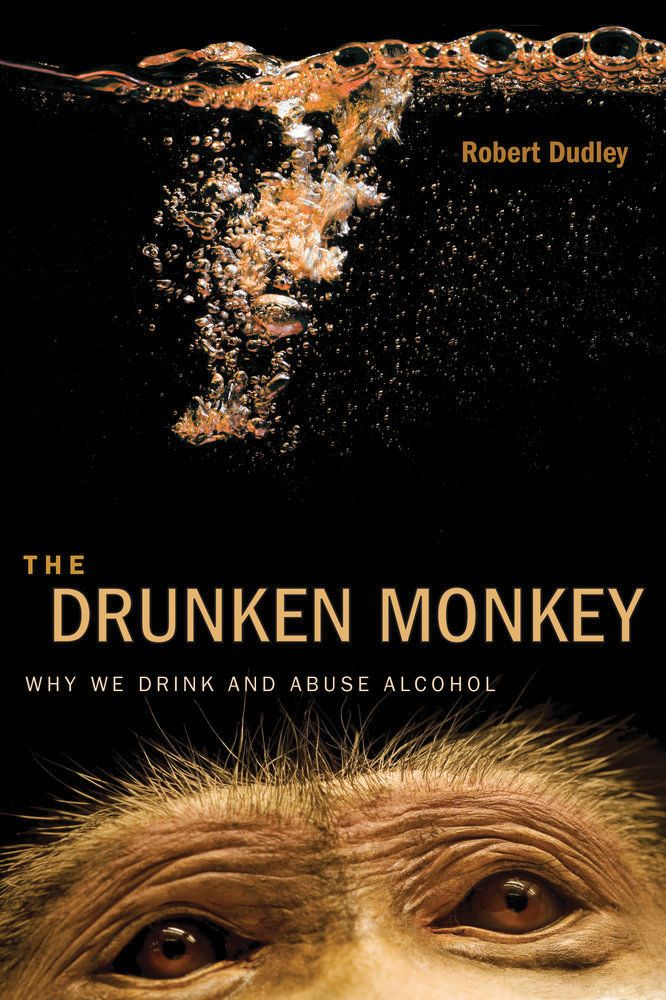
You can follow Alexis on Twitter @aashuste
--
When Robert Dudley first traveled to Panama in the early 1990s, he planned to study the flight mechanics of tropical insects and birds on nearby Barro Colorado Island. But it was during slightly inebriated breaks from this fieldwork that Dudley would lay the foundations for a grand evolutionary theory of something else entirely—alcoholism. Now a professor of integrative biology at UC Berkeley, Dudley has since released numerous publications on his signature hypothesis, including his most recent book, The Drunken Monkey: Why We Drink and Abuse Alcohol.
Dudley’s hypothesis states that human attraction to the smell and taste of alcohol evolved during our early days as primates in the tropics, hungry for fruits of optimal ripeness. According to Dudley, low levels of ethanol signaled to our ancestors that a fruit had just begun to ferment, and the preference for consuming alcohol was positively reinforced over time by the greater caloric reward of riper fruits.
In this light, Dudley suggests that modern alcohol overconsumption may belong alongside diabetes and obesity as one of the “diseases of nutritional excess.” In each case, what were once attractive (and even nutritious) dietary rarities—alcohol, sugars, fats—became abundant more quickly than our metabolism could adapt. The resultant opportunity to constantly indulge our evolved cravings has, for some, led to addiction.
The simplicity of the hypothesis is pleasing and persuasive, and Dudley’s far-reaching overview of the topic—from the chemical underpinnings of fermentation to the archeology of prehistoric distillation—is truly comprehensive. At the risk of boring hard-core biologists with too much history and alienating science-phobes with lots of chemistry, Dudley’s ambitious approach nonetheless assures that every reader will find at least one chapter to delight and fascinate them.
Perhaps most enthralling is the section on fruit flies, who lay their eggs on fermenting fruit and often reach high internal alcohol levels due to their low body mass. Although Dudley acknowledges the shortcomings of using animals as analogies for human behavior, the temptation to see ourselves in these creatures is considerable. The males, for example, have a greater propensity for alcohol after being rejected by a potential mate.
It’s charming to imagine a little fruit fly woefully drinking away his sorrows, but this behavior may instead reflect a “better luck next time” sort of attitude. After all, alcohol-soaked fruits are where fruit fly mating takes place. It’s yet another piece of evidence that alcohol represents an evolutionary advantage first, and an intoxicant second.
As appealing as this evolutionary explanation may be, however, The Drunken Monkey on the whole raises more questions than it answers. Dr. Lee Kaskutas, an adjunct professor in UC Berkeley’s School of Public Health and a senior scientist in the Alcohol Research Group at Oakland’s Public Health Institute, has studied alcoholics in rehabilitation for years. She warns that, despite the resemblance of Dudley’s hypothesis to the already well-understood genetic factors that predispose some people to alcohol abuse more than others, his argument is not to be quite as easily swallowed.
The Drunken Monkey fails to answer what Kaskutas calls “the age old question: why do some people become alcoholics and others don’t?” Namely, if alcoholism is indeed a natural extension of an evolutionarily advantageous behavior, shouldn’t almost everyone be an alcoholic? Yet the fact remains that the majority of modern human drinkers enjoy alcohol responsibly, despite sharing a common evolutionary past with the addicted population.
Kaskutas’ criticism is not necessarily final; it is wholly possible that future research on the topic will successfully reconcile Dudley’s hypothesis with the glaring realities of present day alcoholism. But in this way, what Dudley has produced is less a finalized manifesto and more an experimental to-do list, a bundle of loose ends that occasionally frustrates more than it entices. Perhaps a budding biologist would find some inspiration and direction in the questions marks that riddle Dudley’s pages. But for those of us seeking more conclusive evidence—better to hold out for the sequel.
This article is part of the Fall 2014 issue.



